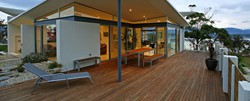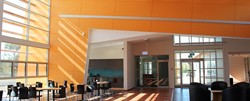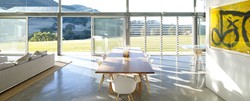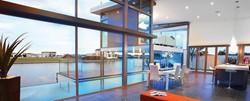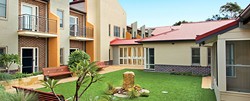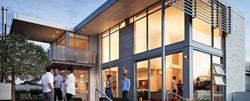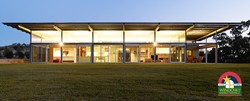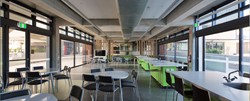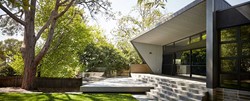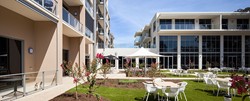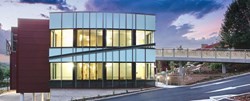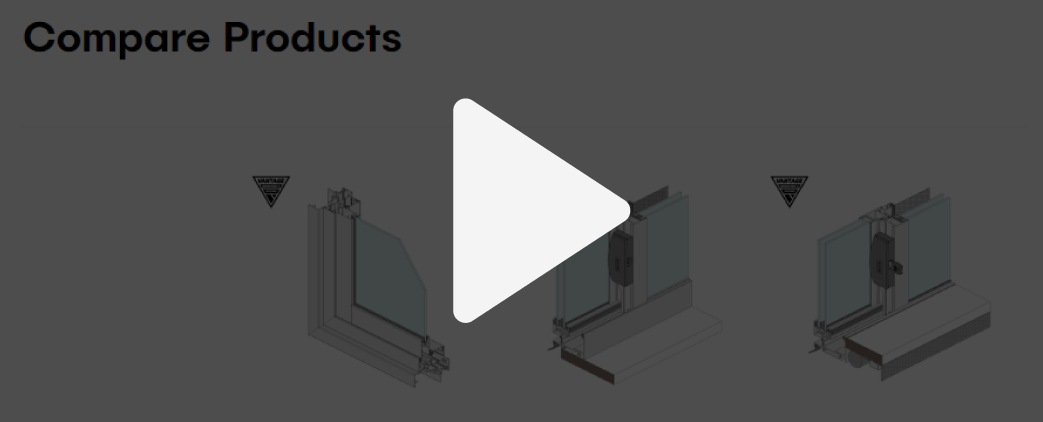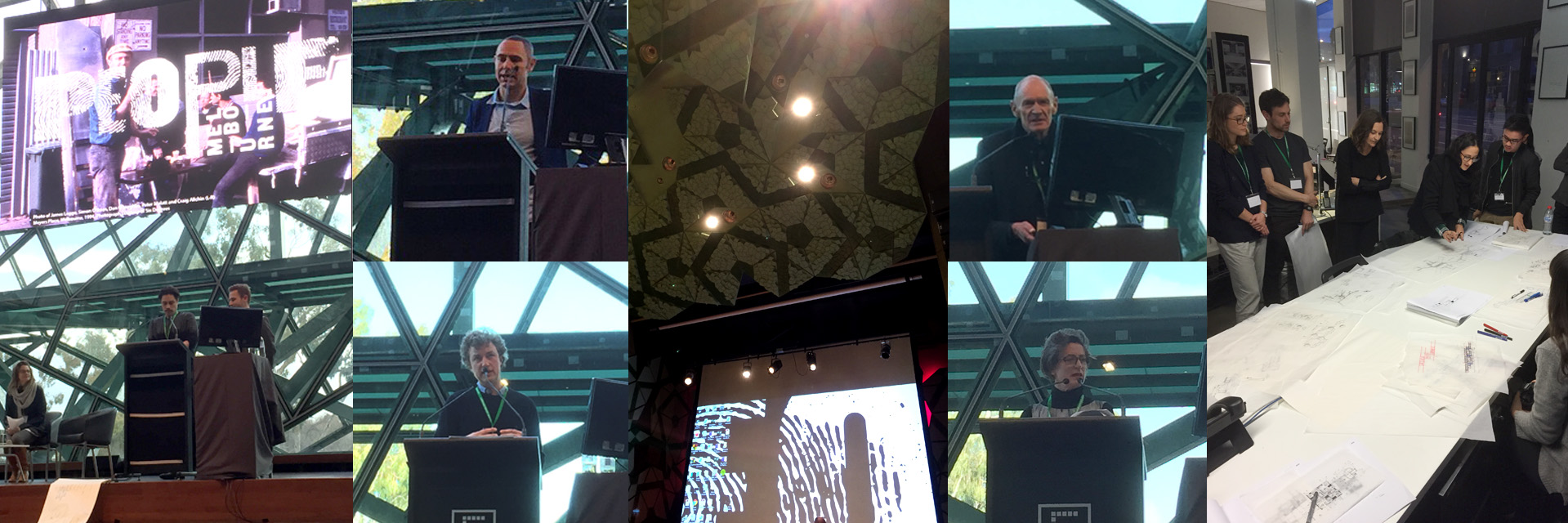If there is only one thing I would like you to remember from this blog post it is this : The extensive program, quality of speakers and brilliant workshops at the National Student Congress offer INCREDIBLE value for money! Now that you know please don’t keep that a secret, spread the word…
And if you ever assumed that it was an event ‘aimed’ at students, you would be very wrong. The tone of all the speakers was firmly about shaping the future course of architecture, surely something that is relevant to us all.
One has to applaud the congress directors - Mercedes Mambort, Darcy Zelenko and Tim Randall - for coming up with a wonderfully engaging format. Over 3 dense days of program, they managed to orchestrate a pace that was both fluid but captivating. And they did a great job of showcasing local design by deciding to host the event at unique venues over the course of the congress– Day 1 at Deakin Edge, Federation Square; Day 2 at Storey Hall, RMIT & Day 3 at Melbourne School of Design, University of Melbourne. Their impressive choice of congress theme - People - is one that is otherwise often relegated to the fringes of architectural debate.
“Each decision you make…you affect people. This is the responsibility of the designer.”
-Mercedes Mambort, Student Congress Creative director
It is also noteworthy that at 10 separate presentation sessions PLUS panel discussions AND workshops, the Student congress was a massive undertaking and hence this blog post will limit itself to covering some personal favourites & highlights from the 3-day event.
Early on Day 1 we were regaled by a wonderfully insightful presentation by Byron Kinnard on the history of the Student Congress itself. With great finesse and plenty of amusing anecdotes up his sleeve, Byron impressed upon me that the Student Congress is well on its way to recouping its relevance and activist role. This prediction materialized when it was later announced that the next congress would be hosted in Sydney on the topic of ‘Advocacy’.
Another highlight was the session titled ‘Who is my Neighbour?’ and included presentations by Eugenia Lim (Assemble Papers, Australia) and Jeremy Mcleod (Breathe Architecture, Australia). If ever you needed evidence that it is optimists who are at the heart of meaningful change – these guys are living examples. Eugenia touched on the topic of her personal, yet political, artworks as well as her editorial stance in her work for Assemble papers. Jeremy delivered an excellent presentation that spoke directly to the Gen Y’s in the room - asking them to think hard about their future choices.
“Who do you want to be? What do you want to work for?”
-Jeremy Mcleod, Breathe Architecture
His work in the Commons offers a triple-bottom line approach that has people at its core. This has now formed the basis for the ‘Nightingale Model’, IP which he is generously sharing with other Architects for free in order for them to facilitate change in the way affordable housing is procured. It firmly laid to rest the stereotype that Architects can’t be collegiate.
‘The Antipodes’ –a session which included two practitioners at either ends of the earth : Helen Stout (Mitchell & Stout Architects, New Zealand) and Steve Larkin (Steve Larkin Associates, Ireland) was a delightful under-the-radar moment. Helen’s talk had me pondering the impact that travel can have on a practice’s ethos as it clearly has in their instance. She is also a stellar exampled of the power that a concerned (and informed) citizen can have to mobilize public opinion and shape a city in order to save it from poor urban planning decisions.
(Advice to the audience) “ Don’t be Timid (in your Architectural ambitions)”
-Helen Stout, Mithcell & Stout Architects
Steve Larkin’s built projects may be half-way around the world but echo the best qualities of iconic Australian architecture – they speak of and to their landscape , all the while embracing humble materials that are executed with craft. However the foundation of his oeuvre is a study of music and its intricacies (based on his background in Irish traditional music). How refreshing to not hear the usual tropes about form and function, but instead explore patterns of material, geography and reverberation!
“I have always thought of the word Form as Gestalt (in its meaning) – an idea manifested; not a description of the shape of a building”
-Steve Larkin, Steve Larkin Architects
This was followed by a session titled Observing through a Lens – including a much-anticipated presentation by photographer John Gollings. His talk was surprisingly self-effacing, as he chose instead to focus on the triumvirate - the architect, the photographer and people/client – that are equally vital in the creation of an image. The ensuing panel discussion – which also included Peter Bennetts, Shannon McGrath & Nic Granleese - tackled the tricky role of people IN architectural imagery. Whilst photographers are often criticized for not including people in their images, it was revealed that often the client/editor/ architect is partly responsible for that decision. Gollings was also very forthright in admitting that there we are hard-wired to focus on the human face and hence people can constitute a distraction from the architecture, which the images are trying to ‘sell’. The panel did agree however that no brief was off-limits in the pursuit of the perfect hero-shot or moment.
Day 1 concluded with the enigmatic but sincere presence of Sean Godsell. He immediately set about dismantling the aura of the starchitect around him by letting the audience choose which one of his projects they would like to hear about. His was a freewheeling, deeply personal reflection on his journey around and into architecture. He also highlighted the importance of stamina in order to practice architecture, a message Gen Y would do well to heed in this age of instant gratification.
“I am also a student of Architecture. I have only been studying it for much longer than you have.”
-Sean Godsell, Sean Godsell Architects
The climax of Day 2 would have to be the Workshop session. 15 of Melbourne best and brightest architectural practices played host to groups of up to 12 congress attendees in their offices. The brief was to tackle the idea of accommodating expanding communities (for instance asylum seekers) within existing urban fabric. More importantly they were a fantastic opportunity to take a peek into the nitty gritty of contemporary practice. I attended the workshop session hosted by Kerstin Thompson at her Carlton office. Kerstin began by outlining the themes explored by her practice as viewed through the lens of typology. She then set the team the task of increasing the density of existing, built projects as a way of setting creative limitations that would challenge the notion of ‘how we live or would like to live’. I found the exercise and ensuing presentations to be very invigorating. I sincerely hope the workshop format becomes a Student Congress legacy.
As they say, you should always go out with a bang. The literal finale to the congress arrived in the form of Takaharu Tezuka (Tezuka Architects, Japan) on Day 3. Eliciting the most number of laughs in the 3-day event, his humorous and unpretentious approach made him an audience favourite. His work constantly seeks to encourage a variety of behavior and questions assumptions about human perception and habits. Archi-speak was distinctly absent and refreshingly replaced by images chock-full of how people occupy the spaces/surfaces of his built projects. All of this was backed up by his deep knowledge of engineering and research into materials. Suffice to say, it ended all to soon for me.
Each and every one of the congress speakers spoke directly to theme and to the (largely Gen Y) audience not as students, but as future decision makers who will wield immense power through their choices.
Events like these often launch a thousand dreams. As Victory Hugo once wisely observed…
“ There is nothing like a Dream to create the Future.
Utopia today…is flesh and blood tomorrow.”
Written by: Sonia Sarangi of Atelier Red + Black (Victorian Event Correspondent for AWS)
Sonia Sarangi is co-director of Atelier Red+Black, an emerging architecture practice in Melbourne. She has a Masters in Architecture from the University of Melbourne and has previously worked for a small practice (Melbourne) and large international practice (Singapore). She is a proud supporter of Parlour and firmly believes that good design enriches life. She can be found on Instagram: @thesarangi


